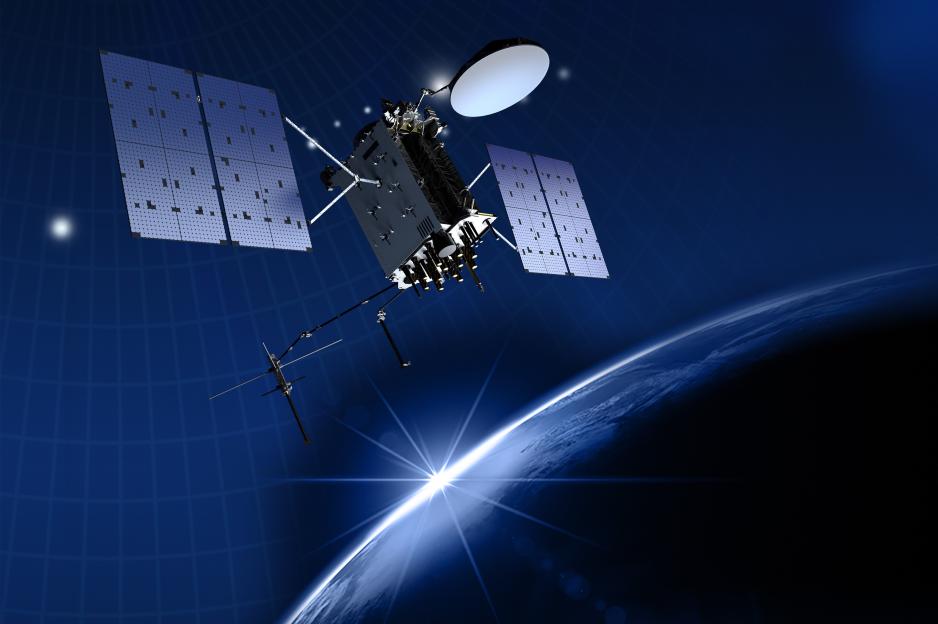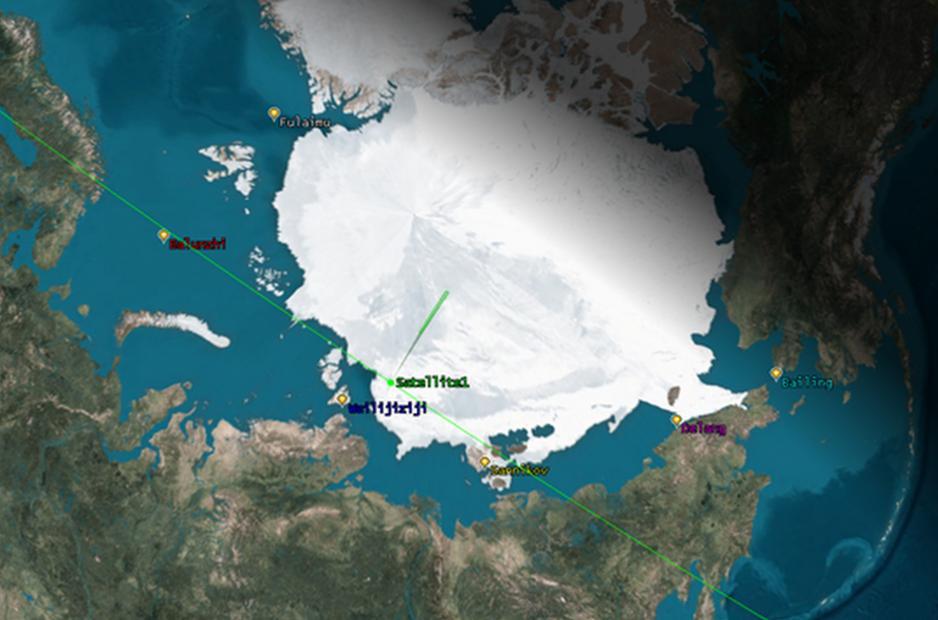Lacking Own Satellite Coverage Russia Is Looking to China For Northern Sea Route Data

Illustration of an observation satellite passing over Earth’s polar area. (Source: US Space Force)
Russian officials announced a host of new initiatives related to boosting traffic on the Northern Sea Route. Key measures include working with China for satellite data to optimize ice navigation on the route and partnering with Chinese and Turkish shipyards for the construction of future icebreakers.
Following last week’s statement by President Putin announcing greater cooperation with China on the Northern Sea Route (NSR), Russian officials provided further details on the development of the route.
Rosatom, operator of the country’s nuclear icebreakers and administrator of the NSR, informed that it is looking to partner with China to receive satellite-based data to improve navigation and ice forecasts on the route.
Chinese officials had revealed plans to launch a new satellite providing Arctic waterways monitoring along Russia’s Northern Sea Route at the end of 2020.
The decision to utilize Chinese satellite data has become necessary as Russia’s ability to procure foreign satellite images has been affected by international sanctions.
At the same time the abilities of Roscosmos, Russia’s space agency, to provide the data are limited as planned new satellite systems to provide radar coverage of the route have been delayed.
The number of data sources that allow making a decision on the passage of ships is very limited.
"In the current geopolitical conditions, the number of data sources that allow making a decision on the passage of ships along a particular route is very limited and continues to narrow. I mean the restrictions on obtaining data from foreign satellites, as well as the lack of a domestic satellite constellation of radar sounding of the Earth,” says Maxim Kulinko, deputy director of the NSR division at Rosatom.
Need for accurate data
The initiative is part of Rosatom’s efforts to create a new unified platform to collect data on the meteorological, ice, and navigational conditions in the waters of the NSR.
A key to improving navigation on the NSR and achieving year-round shipping, will be reliable up-to-date ice forecasts, explains Kulinko. For this purpose, Rosatom is in the process of developing a system that relies on three levels of information:
Satellite images and radar data, photographs taken by ice reconnaissance aircraft flying over the NSR, and automatic observations made by vessels regularly traveling along the route.
“In order to develop year-round safe navigation along the NSR, primarily to the east, it is necessary to increase the number of sources of information that will improve the accuracy of ice forecasts,” Kulinko continues.
Part of the effort will be onboard ice measuring systems which can be installed on vessels traveling the route to measure the thickness, speed, and direction of sea ice.
The data can then be paired with the exact geographic coordinates and analyzed to provide up-to-date ice maps and recommendations to ships on the route.

Orbit of China’s planned Arctic satellite passing over Russia’s Northern Sea Route. (Source: Courtesy of Sun Yat-sen University)
Chinese and Turkish help
Rosatom is also looking to potentially partner with Chinese and Turkish shipyards for the construction of icebreakers in the future.
“The possibilities of both domestic industry and the possibility of attracting the competencies of foreign shipyards are being explored in order for these icebreakers to be built at domestic facilities,” Kulinko continues.
Both countries have sufficient shipbuilding competencies and have submitted proposals at the request of Rosatom.
Rosatom is currently studying if additional Arktika-class vessels, the newest and most capable type of nuclear icebreaker, will be required to reach the anticipated goal of transporting 150m tons of cargo along the NSR by 2030, or if e.g. conventionally-powered icebreakers could suffice. According to Kulinko.
The key customers for icebreaker escort services will be Rosnet, Novatek and Norilsk Nickel.
“It is important to understand the economics and timing of the construction of icebreakers so that by 2030 we have a sufficient icebreaking “power” that would allow us to achieve the targets for the transportation of goods along the NSR,” he explained.
Will allow ship captains to have various options for passage.
For now Russia’s icebreaker construction remains entirely domestically focused. The sixth Arktika-class icebreaker will be laid down at the Baltic shipyards in St. Petersburg in May 2024, to be followed by the seventh in October 2025, at a cost of USD 765m, Rosatom shared this week.
Mapping the NSR
Rosatom also announced that the cargo goal for 2023 stands at 36m tons. This compares to a goal of 32m tons and the achieved figure of 34m tons in 2022.
The operator of the NSR also expects to commission more than 26m tons of new annual port capacity along the NSR between now and the end of 2024, primarily arising from Arctic LNG 2 and Vostok Oil. This will be key to reaching the official goal of 80m tons of cargo along the route in 2024.
As shipping traffic continues to grow and vessels become larger, accurate shipping charts will become of increasing importance. For this purpose the Hydrographic Company, a subsidiary of Rosatom, will continue its efforts to map sections of the NSR.
The company’s three hydrographic vessels aim to map around 40,000 square kilometers of ocean floor during the summer and fall of 2023, Rosatom deputy director Kulinko detailed.
“We are consistently moving towards measuring little-studied high-latitude routes along the NSR after 2024, which will allow ship captains to have various options for passage, primarily taking into account their economic efficiency and safety.”

